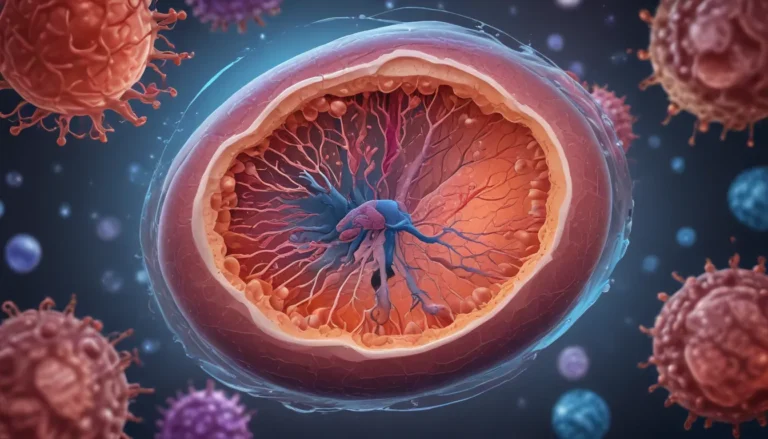A Note About Images: The images used in our articles are for illustration purposes only and may not exactly match the content. They are meant to engage readers, but the text should be relied upon for accurate information.
Welcome to the captivating world of plant growth regulators, where the magic of plant growth and development is unlocked through the power of chemical compounds. From enhancing growth to regulating stress responses, plant growth regulators offer a glimpse into the intricate mechanisms that drive the flourishing of plants. In this article, we will venture into the realm of plant growth regulators and uncover eight intriguing facts that shed light on their essential role in shaping the botanical landscape. Join us on this educational journey as we delve deeper into the fascinating world of plant physiology.
Delving Into Plant Growth Regulators
Plant growth regulators, also known as plant hormones, are a diverse group of chemical compounds that play a pivotal role in regulating various aspects of plant growth and development. These compounds can be either naturally occurring or synthetic, with each type exerting a unique influence on plant physiology. From seed germination to fruit ripening, plant growth regulators hold the key to unlocking the full potential of plants.
The Five Major Types of Plant Growth Regulators
Within the realm of plant growth regulators, there exist five major types that govern different physiological processes in plants. These types include auxins, gibberellins, cytokinins, abscisic acid, and ethylene, each with its specific functions and effects on plant growth. By understanding the distinct roles of these regulators, we can gain a deeper appreciation for the intricacies of plant development.
The Influence of Plant Growth Regulators on Seed Germination
One of the fascinating aspects of plant growth regulators is their ability to influence seed germination. Depending on the concentration and type of growth regulator used, they can either stimulate or inhibit the germination process. This delicate balance in seed germination showcases the precise control that plant growth regulators exert over essential plant functions.
The Dual Nature of Plant Growth Regulators
Plant growth regulators possess the remarkable ability to either promote or inhibit various aspects of plant growth. From stimulating stem elongation to regulating fruit ripening, these compounds showcase their versatility in shaping plant development. The effects of plant growth regulators are dependent on the specific type of regulator and the concentration applied, highlighting the intricacy of their influence on plant physiology.
The Ubiquitous Presence of Plant Growth Regulators in Agriculture and Horticulture
In the realm of agriculture and horticulture, plant growth regulators play a vital role in manipulating plant growth and development. These compounds are widely utilized to increase crop yield, control weed growth, improve fruit set, delay senescence, and regulate plant height. By harnessing the power of plant growth regulators, farmers and horticulturists can optimize plant growth patterns and ensure successful cultivation practices.
The Role of Plant Growth Regulators in Tissue Culture
Plant growth regulators are indispensable in tissue culture techniques, such as micropropagation and somatic embryogenesis. By using these regulators, researchers can induce the growth of new plant tissues from explants and promote the regeneration of whole plants. The applications of plant growth regulators in tissue culture open up new possibilities for plant propagation and genetic manipulation.
Plant Growth Regulators and Environmental Stress Responses
Plants are exposed to a myriad of environmental stresses, including drought, salinity, extreme temperatures, and pathogen attacks. Plant growth regulators play a crucial role in helping plants adapt and survive under adverse conditions. By modulating the plant’s response to environmental stresses, these regulators enhance the resilience and survival of plants in challenging environments.
The Biotechnological Potential of Plant Growth Regulators
The use of plant growth regulators in biotechnology offers exciting prospects for crop improvement and plant breeding. These compounds can be harnessed to develop genetically modified crops with enhanced traits, such as disease resistance, improved yield, and stress tolerance. By leveraging plant growth regulators, researchers can revolutionize agricultural practices and address global food security challenges.
Conclusion: Harnessing the Power of Plant Growth Regulators
In conclusion, plant growth regulators are indispensable tools in the arsenal of farmers, horticulturists, and researchers seeking to optimize plant growth and development. By unraveling the mysteries of plant growth regulators and understanding their diverse applications, we can unlock the full potential of plants and enhance agricultural productivity. From regulating flowering to controlling fruit ripening, plant growth regulators offer a wealth of benefits that pave the way for a brighter future in agriculture and horticulture.
FAQs: Navigating the World of Plant Growth Regulators
-
What are plant growth regulators?
Plant growth regulators are chemical compounds that influence the growth and development of plants by regulating various physiological processes. -
How do plant growth regulators work?
Plant growth regulators operate by interacting with the plant’s hormonal signaling pathways, either stimulating or inhibiting specific processes to regulate growth and development. -
What are some examples of plant growth regulators?
Common examples of plant growth regulators include auxins, cytokinins, gibberellins, ethylene, and abscisic acid, each with unique roles in plant physiology. -
How are plant growth regulators used in agriculture?
In agriculture, plant growth regulators are utilized to increase crop yield, control weed growth, regulate fruit ripening, and enhance stress tolerance in plants. -
Are plant growth regulators safe for human consumption?
When used responsibly and according to regulations, plant growth regulators are generally considered safe for human consumption, with regulatory bodies ensuring adherence to safety guidelines. -
Can plant growth regulators be harmful to the environment?
While plant growth regulators can have environmental implications, their impact is minimal when used judiciously and in compliance with regulatory standards. -
Can plant growth regulators be used in organic farming?
Certain plant growth regulators are permitted for use in organic farming, provided they meet organic certification criteria and are derived from natural sources. -
What are the risks of misusing plant growth regulators?
Improper application or excessive use of plant growth regulators can lead to reduced crop quality, environmental damage, and potential risks to human health, emphasizing the importance of following recommended guidelines.
As we embark on this journey through the enchanting world of plant growth regulators, let us continue to explore, learn, and harness the transformative power of these remarkable compounds. Together, we can cultivate a deeper understanding of plant physiology and pave the way for a greener, more sustainable future in agriculture and horticulture.






